What makes the Great Wildebeest Migration so great
You can hear the galloping hooves before you see them, the sheer number creating a noise that resounds over the savannah plains of Kenya’s Maasai Mara and reaches you in the game drive vehicle. Rightly called the ‘greatest wildlife show on earth’, witnessing part of the annual journey of 2.5 million wildebeest, zebra and gazelle as they follow the rains is a once-in-a-lifetime safari experience.
 It is natural instinct that leads these plains animals to find greener pastures and fresh water sources, taking a circular route that moves in a clockwise direction from the Serengeti Plains in Tanzania to the Maasai Mara Reserve in Kenya. They travel some 2600 square kilometers across the two countries, facing often fatal challenges in the form of predators, both on land and in the rivers, as well as exhaustion, thirst and starvation. Here are four reasons that explain why watching the Great Wildebeest Migration is an experience found at the top of many a safari enthusiast’s bucketlist:
Located in an internationally celebrated ecosystem
It bears the title of ‘seventh’ natural wonder of the world as it has the largest concentration of terrestrial wildlife on earth and a significant diversity of habitats including open grassland, riverine forest, acacia woodland and swamps. The Maasai Mara is a 583 square mile (1510 square kilometer) national reserve found in south-western Kenya.
It is natural instinct that leads these plains animals to find greener pastures and fresh water sources, taking a circular route that moves in a clockwise direction from the Serengeti Plains in Tanzania to the Maasai Mara Reserve in Kenya. They travel some 2600 square kilometers across the two countries, facing often fatal challenges in the form of predators, both on land and in the rivers, as well as exhaustion, thirst and starvation. Here are four reasons that explain why watching the Great Wildebeest Migration is an experience found at the top of many a safari enthusiast’s bucketlist:
Located in an internationally celebrated ecosystem
It bears the title of ‘seventh’ natural wonder of the world as it has the largest concentration of terrestrial wildlife on earth and a significant diversity of habitats including open grassland, riverine forest, acacia woodland and swamps. The Maasai Mara is a 583 square mile (1510 square kilometer) national reserve found in south-western Kenya.
 High success rate of Big 5 sightings
Given the title ‘Big 5’ by large game hunters for being the most difficult animals in Africa to hunt on foot, encountering the magnificent buffalo, elephant, leopard, lion and rhino on safari is a priority for many wildlife enthusiasts. It is the black rhino of this highly endangered species that may be spotted in the Maasai Mara.
High success rate of Big 5 sightings
Given the title ‘Big 5’ by large game hunters for being the most difficult animals in Africa to hunt on foot, encountering the magnificent buffalo, elephant, leopard, lion and rhino on safari is a priority for many wildlife enthusiasts. It is the black rhino of this highly endangered species that may be spotted in the Maasai Mara.
 Thrilling predator-prey interaction
The Great Wildebeest Migration passes through the Maasai Mara from around July to October every year and the unmissable presence of game animals on the plains does not go unnoticed by the big cats and other predators. The over half a million wildebeest born in the Serengeti in January and February are still young calves by the time they reach the Maasai Mara, making them ideal targets for predators.
Thrilling predator-prey interaction
The Great Wildebeest Migration passes through the Maasai Mara from around July to October every year and the unmissable presence of game animals on the plains does not go unnoticed by the big cats and other predators. The over half a million wildebeest born in the Serengeti in January and February are still young calves by the time they reach the Maasai Mara, making them ideal targets for predators.
 Authentic luxury safari experiences
Many consider Kenya to be the birthplace of the traditional safari and, having celebrated its centenary birthday this year, Cottar’s 1920s Safaris is the oldest established and continuing safari family in Africa. Staying at Cottar’s Safari Camp is like stepping back in time yet with all the modern creature comforts and world-class hospitality that is expected of luxury safari experience.
Authentic luxury safari experiences
Many consider Kenya to be the birthplace of the traditional safari and, having celebrated its centenary birthday this year, Cottar’s 1920s Safaris is the oldest established and continuing safari family in Africa. Staying at Cottar’s Safari Camp is like stepping back in time yet with all the modern creature comforts and world-class hospitality that is expected of luxury safari experience.
 Calvin Cottar is Director and Owner at Cottar’s 1920s Safaris. Cottar’s 1920s Safaris is an award-winning luxury 1920s safari camp and private bush villa located in the famous ‘seventh’ natural wonder of the world, the Maasai Mara in Kenya, and owned and managed by the oldest established and continuing safari family in Africa.
If you would like to be a guest blogger on A Luxury Travel Blog in order to raise your profile, please contact us.
Calvin Cottar is Director and Owner at Cottar’s 1920s Safaris. Cottar’s 1920s Safaris is an award-winning luxury 1920s safari camp and private bush villa located in the famous ‘seventh’ natural wonder of the world, the Maasai Mara in Kenya, and owned and managed by the oldest established and continuing safari family in Africa.
If you would like to be a guest blogger on A Luxury Travel Blog in order to raise your profile, please contact us.
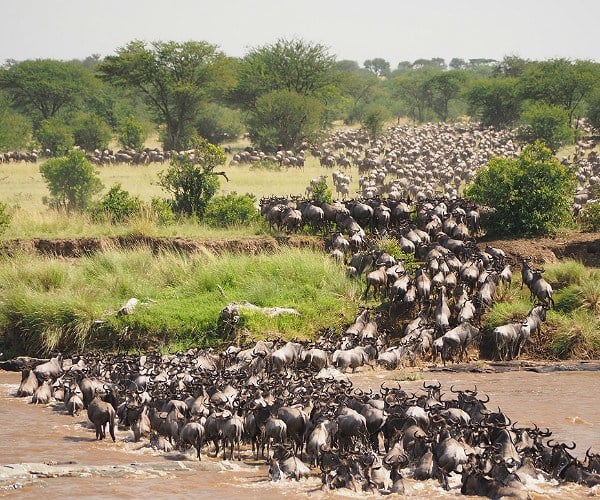 It is natural instinct that leads these plains animals to find greener pastures and fresh water sources, taking a circular route that moves in a clockwise direction from the Serengeti Plains in Tanzania to the Maasai Mara Reserve in Kenya. They travel some 2600 square kilometers across the two countries, facing often fatal challenges in the form of predators, both on land and in the rivers, as well as exhaustion, thirst and starvation. Here are four reasons that explain why watching the Great Wildebeest Migration is an experience found at the top of many a safari enthusiast’s bucketlist:
Located in an internationally celebrated ecosystem
It bears the title of ‘seventh’ natural wonder of the world as it has the largest concentration of terrestrial wildlife on earth and a significant diversity of habitats including open grassland, riverine forest, acacia woodland and swamps. The Maasai Mara is a 583 square mile (1510 square kilometer) national reserve found in south-western Kenya.
It is natural instinct that leads these plains animals to find greener pastures and fresh water sources, taking a circular route that moves in a clockwise direction from the Serengeti Plains in Tanzania to the Maasai Mara Reserve in Kenya. They travel some 2600 square kilometers across the two countries, facing often fatal challenges in the form of predators, both on land and in the rivers, as well as exhaustion, thirst and starvation. Here are four reasons that explain why watching the Great Wildebeest Migration is an experience found at the top of many a safari enthusiast’s bucketlist:
Located in an internationally celebrated ecosystem
It bears the title of ‘seventh’ natural wonder of the world as it has the largest concentration of terrestrial wildlife on earth and a significant diversity of habitats including open grassland, riverine forest, acacia woodland and swamps. The Maasai Mara is a 583 square mile (1510 square kilometer) national reserve found in south-western Kenya.
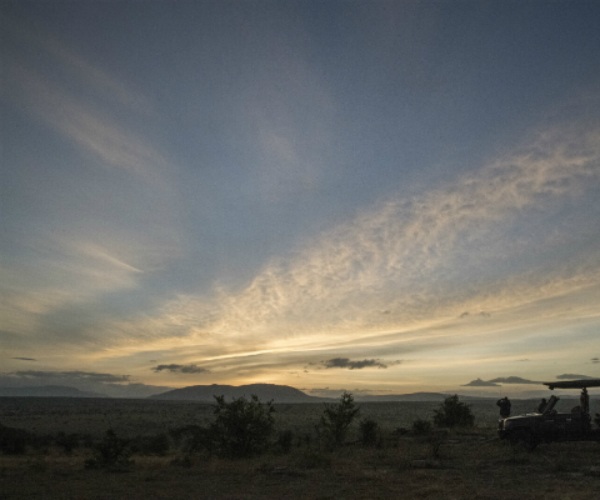 High success rate of Big 5 sightings
Given the title ‘Big 5’ by large game hunters for being the most difficult animals in Africa to hunt on foot, encountering the magnificent buffalo, elephant, leopard, lion and rhino on safari is a priority for many wildlife enthusiasts. It is the black rhino of this highly endangered species that may be spotted in the Maasai Mara.
High success rate of Big 5 sightings
Given the title ‘Big 5’ by large game hunters for being the most difficult animals in Africa to hunt on foot, encountering the magnificent buffalo, elephant, leopard, lion and rhino on safari is a priority for many wildlife enthusiasts. It is the black rhino of this highly endangered species that may be spotted in the Maasai Mara.
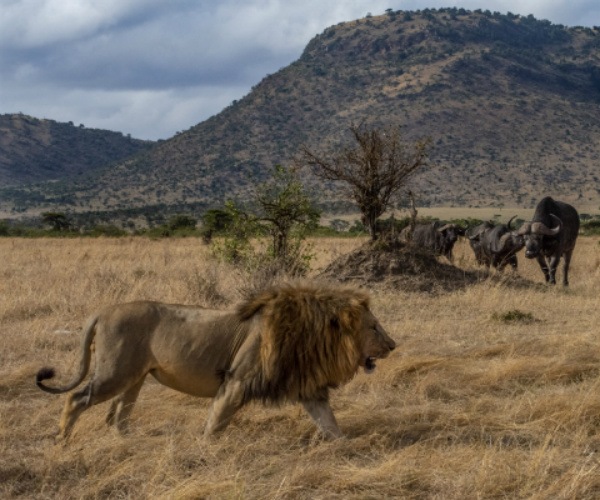 Thrilling predator-prey interaction
The Great Wildebeest Migration passes through the Maasai Mara from around July to October every year and the unmissable presence of game animals on the plains does not go unnoticed by the big cats and other predators. The over half a million wildebeest born in the Serengeti in January and February are still young calves by the time they reach the Maasai Mara, making them ideal targets for predators.
Thrilling predator-prey interaction
The Great Wildebeest Migration passes through the Maasai Mara from around July to October every year and the unmissable presence of game animals on the plains does not go unnoticed by the big cats and other predators. The over half a million wildebeest born in the Serengeti in January and February are still young calves by the time they reach the Maasai Mara, making them ideal targets for predators.
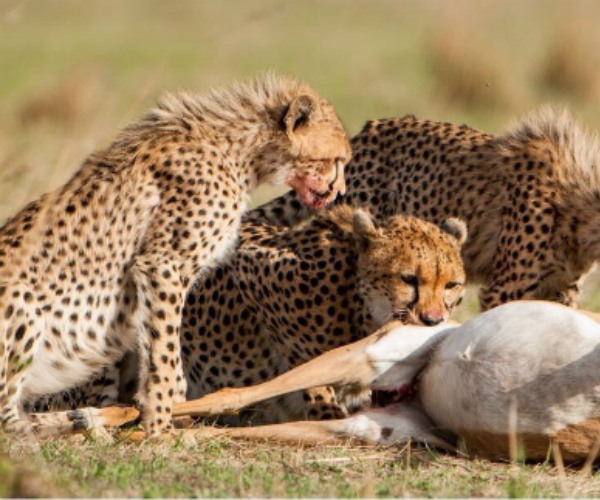 Authentic luxury safari experiences
Many consider Kenya to be the birthplace of the traditional safari and, having celebrated its centenary birthday this year, Cottar’s 1920s Safaris is the oldest established and continuing safari family in Africa. Staying at Cottar’s Safari Camp is like stepping back in time yet with all the modern creature comforts and world-class hospitality that is expected of luxury safari experience.
Authentic luxury safari experiences
Many consider Kenya to be the birthplace of the traditional safari and, having celebrated its centenary birthday this year, Cottar’s 1920s Safaris is the oldest established and continuing safari family in Africa. Staying at Cottar’s Safari Camp is like stepping back in time yet with all the modern creature comforts and world-class hospitality that is expected of luxury safari experience.
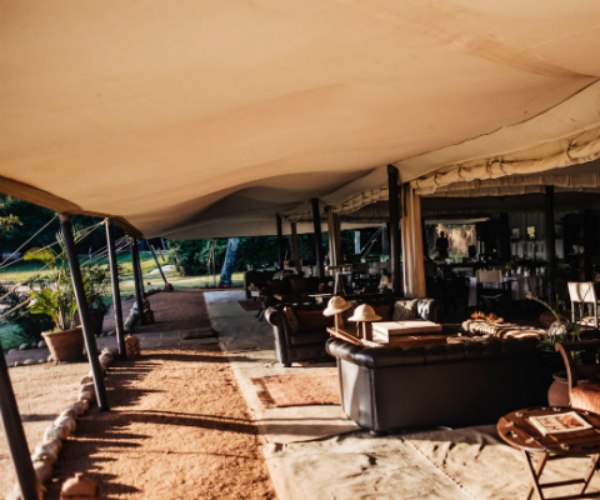 Calvin Cottar is Director and Owner at Cottar’s 1920s Safaris. Cottar’s 1920s Safaris is an award-winning luxury 1920s safari camp and private bush villa located in the famous ‘seventh’ natural wonder of the world, the Maasai Mara in Kenya, and owned and managed by the oldest established and continuing safari family in Africa.
If you would like to be a guest blogger on A Luxury Travel Blog in order to raise your profile, please contact us.
Calvin Cottar is Director and Owner at Cottar’s 1920s Safaris. Cottar’s 1920s Safaris is an award-winning luxury 1920s safari camp and private bush villa located in the famous ‘seventh’ natural wonder of the world, the Maasai Mara in Kenya, and owned and managed by the oldest established and continuing safari family in Africa.
If you would like to be a guest blogger on A Luxury Travel Blog in order to raise your profile, please contact us.Did you enjoy this article?
Receive similar content direct to your inbox.


I have heard a lot about the Great Migration but I just didn’t know that not only did it take place on such a grand scale with 2.5m creatures taking part, I also had no idea that it stretched over 4 months. Nor did I realise that the animals covered such huge exhausting distances. I can see how it gets it’s name as “The Greatest Show on Earth”. After all of the success of the Greatest Showman maybe a wildlife film maker will create a lengthy drama on this Greatest Show. It must be full of the drama of tragedy, close shaves and miraculous escapes.
It truly is an incredible spectacle to witness and indeed so full of moments that do make for an epic tale, Charles!
If you’ve read this make sure that you click onto the Cottar’s 1920s safari site. It’s like a glamorous fashion shoot for an ultra cool safari magazine. The 1920s retro safari look is fantastic though of course it’s done with all modern comforts. I’m guessing that you wouldn’t go short of ice in your sundowner cocktail here. And above all it’s just 1 kilometre from the Masai Mara.
Thanks so much, Sarah. We are so pleased that over 100 years later, we are still able to offer classic safaris in one of the most beautiful places in Africa. And of course, it’s just not a ‘real’ safari without sipping on an ice-cold G&T while you watch the sun set over the plains.
It would be brilliant to have a grandstand view for the Great Migration but how do you get to Cottar’s 1920s Safari camp. Where do you fly too and can they arrange transport for you?
You fly out from Wilson Domestic Airport in Nairobi and take a 45-minute flight to Cottar’s Private Airstrip in the Masai Mara, which is a 15-minute drive from Cottar’s 1920s Camp.
Cottar’s will arrange for your guide to collect you from the airstrip at no extra cost. Alternatively, you can land at Keekorok Airstrip in the Masai Mara but please note this is a 2-hour game drive from Cottar’s 1920s Camp. Cottar’s will arrange for your guide to collect you from the airstrip.
I imagine this being very impressive to watch ‘in the flesh’, so to speak, rather than through photos or a TV documentary. I’d love to see some of the big 5, but I’d probably find it rather daunting at the same time, probably because of the horror stories you read about people on 4×4 or car safaris getting attacked, even though it must be such a tiny number compared to how many have safe and amazing trips every day. I need to stop reading these things! That’s why I think it’s so important to go with a guide, to take precautions and feel safe with whoever’s taking you. What’s the best way to do it in the Serengeti, in terms of transport?
The best way would be in a 4×4 Landcruiser, which most of the top safari camps use. They will also provide you with a top guide and probably a spotter, so you won’t miss a thing.
World-renowned for its vast plains of wildlife and its overwhelming natural beauty, Tanzania is a very rich one-stop Africa safari destination that is flocked by thousands of travellers every year. Tanzania is more famous for its annual wildebeest migration.
Famous as one of the world’s seven natural wonders, hosted by Tanzania’s Serengeti National Park –the wildebeest migration offering one of the perfect sights on Tanzania safaris tours.
Every single year, over a million wildebeest, zebra and antelope migrate clockwise around the popular Serengeti National Park (Tanzania)- Masai Mara Game Reserve (Kenya) ecosystem. The migration across the two countries creates time for courting, mating and birthing/reproduction along the way. The great wildebeest migration involves an estimate of 1.5million wildebeest, 500,000 Thompson’s gazelle, 200,000 zebras and 18,000 elands. This probably is the largest number of wildlife sighted a wildlife safari in Tanzania or Kenya wildlife safari.
Don’t miss out this on your Africa safari
A combined Kenya and Tanzania safari makes for an incredible wildebeest migration experience!
I’m fairly sure that it was on A Luxury Travel Blog but recently I read another excellent article on the Great Wildebeest Migration.
Although about 2.5m wildebeest migrate usually around 200,000 die a long the way. Drowning or being injured or falling prey to predators. Those are not good odds. As a wildebeest you’ve roughly got a 1 in 12 chance of failing to complete your journey.
Even more distressing is that sometimes the wildebeest cross a river, which is high risk, and then cross back again, even more of a risk. You would have thought that they would know where they were going and would try to get there with as little risk as possible.
Well, watching the great wildebeest migration is just one of the few activities to do in Africa. There are a plenty of other amusing and thrilling things to do in the continent. For instance, one can go on a safari, do hiking, indulge in some beach and wild water adventures (like snorkelling, rafting, fishing, surfing), explore by cycling, visit historical sights, discover the culture, attend festivals and shop until you drop!
We’re with you on this Megan – if you’re going to visit Africa, why not make the most of it?! Kenya has the best of both worlds, the wildlife-rich savannah plains of the Maasai Mara and the beaches of Mombasa and its surrounding islands.
This is not something I would usually write in my bucket list but this kind of adventure is something I would like to give a try for once. It’s just too bad we can’t fly to Africa now due to this whole pandemic situation but I hope when everything eases up, we can pack and fly to the Serengeti and be amazed by this phenomenon and be outdoors with nature again instead of concrete buildings.